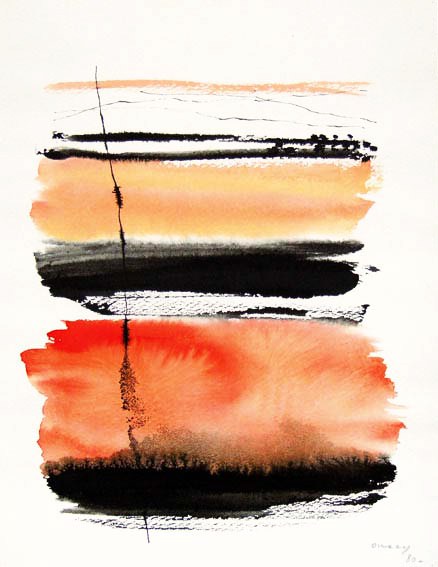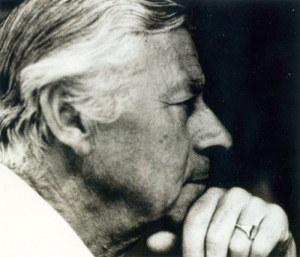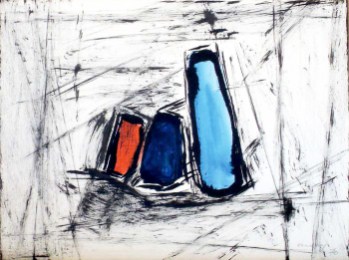HARRY OUSEY EXHIBITION AT ELEPHANTSTONES!
We're celebrating the gallery's 3rd Birthday with an exhibition of Harry Ousey's abstracted landscapes!
The Exhibition
The exhibition will run throughout the May Bank Holiday weekend (27th-29th) , until Friday 2nd June. 10am - 4pm
If you come along to the gallery you'll find a time-line
of Harry's life and a wide selection of his works. All the works will be for sale, so owning an original work is within reach!
PREVIEW EVENING
We will be having a celebratory preview night on Friday 26th of May
6-9pm. If you would like to come, pop us an email to whato@elephantstones.co.uk or call in and we will give you an invite! Drinks and nibbles will abound!
See you there!!!!
The Hayfield Connection
Harry and his wife Susie lived at Hill House Farm from 1947 -1950 and it was here that his time surrounded by the landscape inspired much of his future work.
Harry's "edge movement" draws upon elements of landscape - drystone walls, drifting clouds and the horizon of hills and simplifies them into abstraction. The picture here is a great example of landscape distilled into a few sparing lines and bleeding colours.
Harry Ousey?
Harry Ousey, born in Longsight, Manchester, has been described as "very important in the 20th century British art scene".
His life story is one of a bohemian drifter who created truly great art, but who found the machinations of commercial art distasteful and the politics and posturing of the art scene a source of disillusionment.
When he did come into contact with the art establishment, his work was lauded and exhibited, but the art world doesn't chase and Harry’s restless drifting saw him elude broad recognition.
A Life Immersed in Art
He was at the International Surrealist Exhibition of 1936 where Salvador Dali turned up in a diving suit. He worked in St Ives and was a contemporary of Wilhemina Banks-Graham, Barbara Hepworth and Ben Nicholson. He lived in swinging London in the sixties before a final move to France where he remained until his death in 1985 in Marseilles. At every point he was making art and his work developed along similar lines to other artists such as Rothko yet, whilst he acknowledged the parallels, his isolation gives credibility to his assertion that his creativity was independent of direct influence.
His body of work includes oil, watercolour and collage and fragments are to be found in the Whitworth Gallery, Falmouth Art Gallery, The Museum of Contemporary Art, Macedonia, The Devonshire Collection, Chatsworth House and the Salford Museum and Art Gallery.




